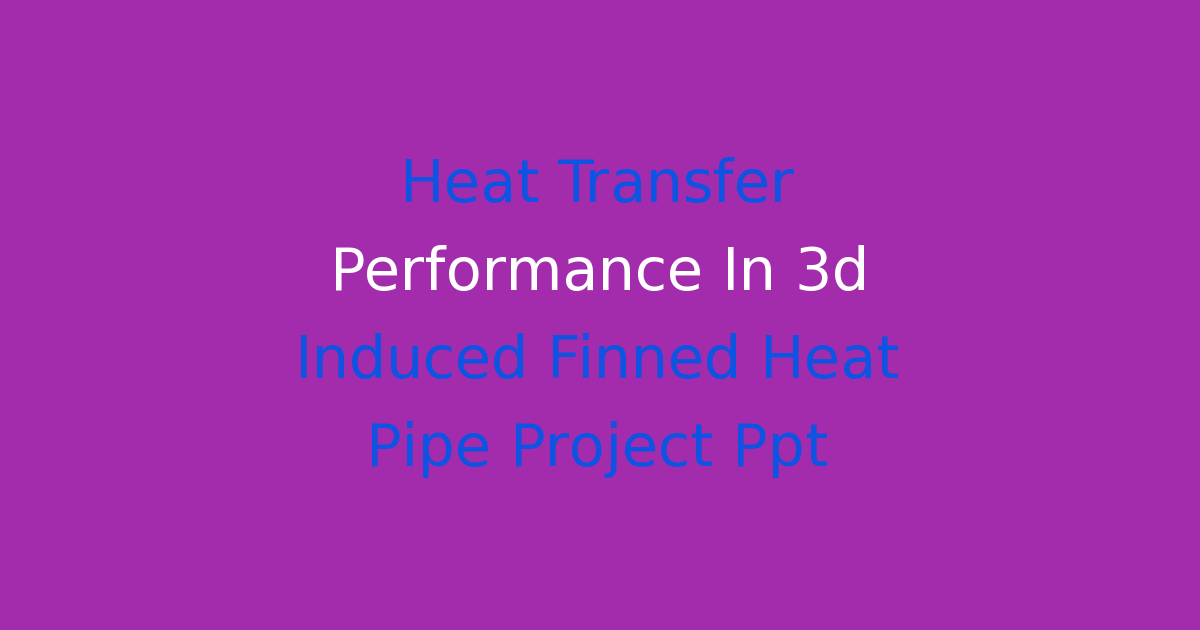Presentation on the enhancement of heat transfer performance in a 3D finned heat pipe project.
Introduction
Heat transfer is a critical aspect of many engineering processes, ranging from electronic cooling to industrial applications. One of the key methods used to enhance heat transfer is the use of heat pipes, which are highly efficient heat transfer devices. In this project, we aim to improve the heat transfer performance of heat pipes by introducing 3D induced fin design.
Problem Statement
Traditional heat pipes have limitations in terms of heat transfer efficiency, especially in high heat flux situations. This can lead to thermal inefficiencies and reduced performance in various applications. The need for better heat transfer solutions is crucial for improving the overall efficiency of engineering systems.
Existing System
The existing heat pipes typically have a cylindrical or planar shape, which limits their heat transfer performance. The surface area available for heat transfer is restricted, leading to lower efficiency, especially in applications with high heat flux. Additional techniques such as adding fins to traditional heat pipes have been used to improve heat transfer, but there is still room for further enhancement.
Disadvantages
Some of the disadvantages of the existing heat pipes include limited heat transfer area, which leads to reduced efficiency in high heat flux situations. The traditional cylindrical or planar designs also restrict the overall heat transfer performance. Moreover, the addition of fins to the traditional heat pipes can increase the overall size and weight, making them less practical for certain applications.
Proposed System
To address the limitations of the existing heat pipes, we propose the use of 3D induced fin design. This design involves incorporating three-dimensional fins into the heat pipe structure, increasing the heat transfer area significantly. The 3D fins are strategically placed to maximize heat transfer efficiency while minimizing the size and weight of the heat pipe.
Advantages
The proposed 3D induced fin design offers several advantages over traditional heat pipes. By increasing the heat transfer area, the heat pipe can achieve higher efficiency in dissipating heat, especially in high heat flux scenarios. The strategically placed 3D fins also help in reducing the overall size and weight of the heat pipe, making it more practical for a wide range of applications.
Features
Some of the key features of the 3D induced finned heat pipe include:
– Increased heat transfer area for higher efficiency
– Strategic placement of 3D fins for optimal heat dissipation
– Reduced size and weight compared to traditional heat pipes with fins
– Improved thermal performance in high heat flux situations
– Enhanced overall efficiency in heat transfer applications
Conclusion
In conclusion, the proposed 3D induced finned heat pipe design offers a promising solution to enhance heat transfer performance in engineering applications. By increasing the heat transfer area and optimizing the fin placement, the heat pipe can achieve higher efficiency in dissipating heat. This innovative design presents a significant improvement over traditional heat pipes and has the potential to revolutionize heat transfer technology in various industries.

